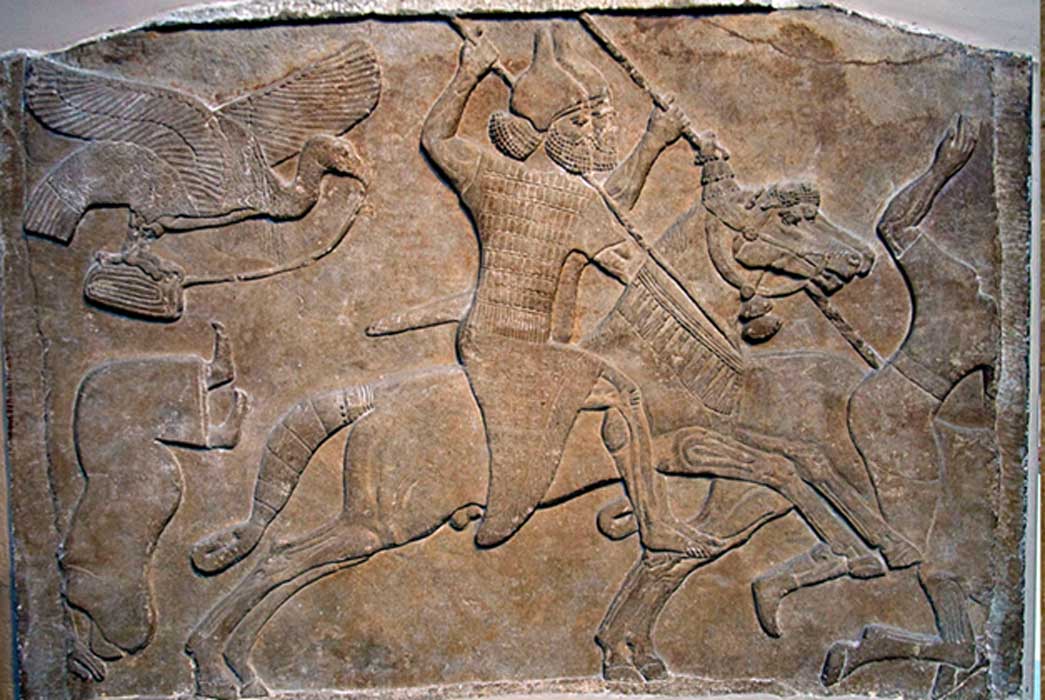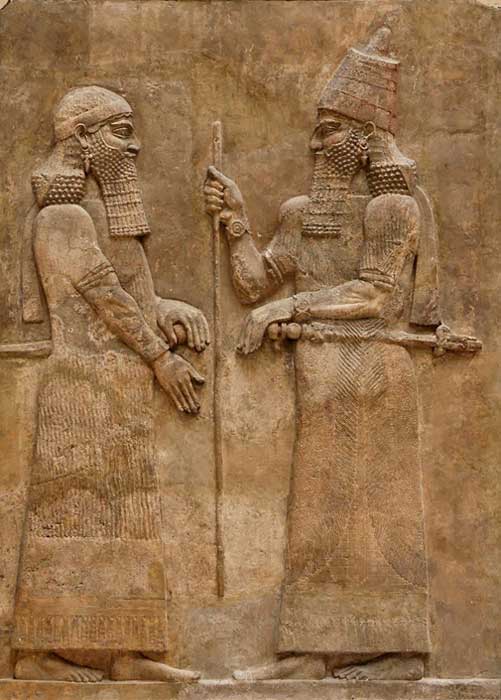
The Iron Army: Assyria - Terrifying Military of the Ancient World - Part I
Before the famed Persian Empire, whose borders spanned from India to Thrace, there was another empire—the Assyrians. The Assyrian Empire, while much smaller than the future Persian Empire to come, made up for its lack of territorial mass with a well-greased, organized fighting machine.
In the book of Nahum verse 1, the prophet Nahum made it clear that Assyria was a “city of blood, full of lies, full of plunder, never without victims! The crack of whips, the clatter of wheels, galloping horses and jolting chariots! Charging cavalry, flashing swords and glittering spears!”
What made the Assyrian Empire one of the most terrifying militaries in the ancient world was that they were organized, well led, well fed, well supplied, and had the tools to crack into just about any city they so desired. When it comes to warfare, sieges dominate the vast array of Assyrian reliefs. The siege we will focus on is that of Lachish in 701 BCE.
In order to understand how the Neo-Assyrian military organization functioned one must first focus on the head of the army, the king. From there, we can gather the role of the nobility in military affairs and finally those who formed the bulk of the army.
King: Despotic Commander in Chief

Sargon II and dignitary. Palace of Sargon II at Dur Sharrukin in Assyria (now Khorsabad in Iraq), c. 716–713 BC. (Public Domain)
The Assyrian king wasn’t just directly involved with state affairs on all levels; he was the state. Every aspect of state affairs, whether international, political, military, and religious, was directly linked to him. The king was absolute, but even he had limitations. The Assyrian king, unlike the pharaoh of Egypt, was not divine but despotic. He was a mediator between the gods and his subjects through his ritual purification by both divine and human attendants. Besides the day-to-day domestic and foreign affairs dealt with by the king, he was commander and chief of the Assyrian army. Middle Assyrian inscriptions attest to this, as the Assyrian king on his coronation would swear an oath that they would lead their armies, in person, on annual campaigns of conquest to extend their borders. Even though he was the head of his army, he was a figurehead to a certain degree, for his military duties were diffused and delegated to lesser officials.
Turtānu: Leader of Armies
This lesser official, who would lead armies, was the turtanu. The turtanu was second in military command right under the king. While the king was in fact the commander in chief of the army, the real responsibility in executing his majesty’s orders lay in the hands of the turtanu. Assyrian kings did participate in campaigns but when unable, the turtanu was firmly in charge. Eventually either Tiglath-Pileser III or Sargon II reorganized the office of the turtanu. In the past, one man held the position. However, this changed. Instead of having one man take charge of the military forces there was be two. One man was in charge “of the left” and the other "of the right." While not definitive in all cases, the post of the turtanu were assigned to eunuchs. The reason for this was to limit power by ensuring that the man in charge could not pass his office down to his son through inheritance, which in turn limited the power of the office and avoided the possibility of a coup.




